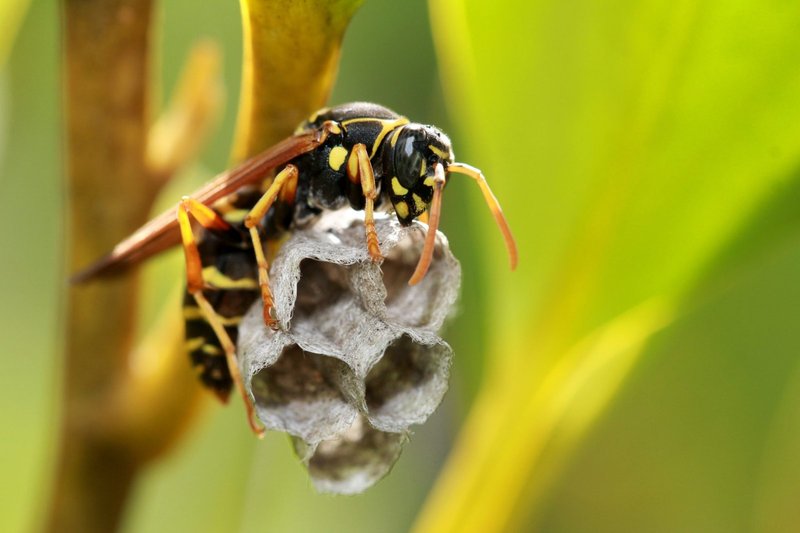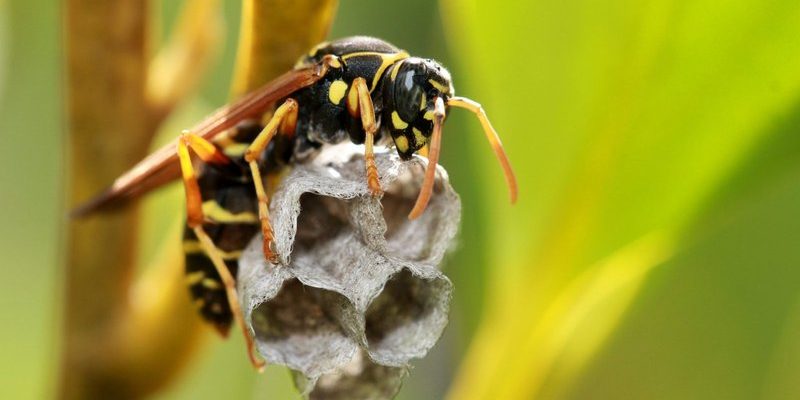
Now, if you’re picturing wasps buzzing around relentlessly, it’s time to rethink that image. Paper wasps are quite social and play a vital role in keeping our ecosystems balanced. Let’s dive into where the paper wasp lives and how it adapts to its surroundings, revealing just how incredibly resourceful these insects can be.
The Habitats of Paper Wasps
When it comes to where paper wasps live, they’re not picky but have their preferences. You’ll find them in a range of settings, from urban gardens to wild forests. Their preferred habitats usually include:
- Woodland edges
- Gardens and parks
- Under eaves of buildings
- In shrubbery and trees
In urban areas, they often settle near human activity, constructing their nests in sheltered spots that provide both protection and access to food sources. Think of it like a cozy neighborhood where they can find everything they need, from leaves for nest-building to sweet nectar.
Interestingly, paper wasps are also capable of creating nests in a wide variety of materials. Their nests are formed from chewed-up plant fibers mixed with their saliva, resulting in a papery substance that resembles the texture of cardboard. This ability to adapt the nest material based on availability is just one of the ways these insects showcase their flexibility.
Social Structure and Nesting Behavior
Paper wasps are social insects, which means they thrive in colonies. Each colony has a hierarchical structure, typically led by a dominant female, known as the queen. The queen is responsible for laying eggs, while worker wasps take on various tasks like foraging for food, building nests, and caring for the young.
You might be wondering how they manage their social dynamics. Here’s the thing: social behavior is crucial for their survival. By cooperating and sharing responsibilities, they can allocate tasks efficiently. Imagine a small team working together on a project—everyone has their role, and together, they make it happen.
As for nesting behavior, paper wasps prefer to build their homes in sheltered areas, which offers protection from weather and predators. Their nests are usually umbrella-shaped with a series of hexagonal cells where they raise their young. This unique design allows for ventilation, helping keep the larvae healthy as they develop.
Food Sources and Foraging Adaptations
Now that we’ve explored where paper wasps live and how they structure their colonies, let’s talk about their food sources. Paper wasps primarily feed on nectar, fruits, and insects, providing them with the sugars and proteins they need to thrive.
Foraging is where these wasps really show off their adaptability. They hunt for insects to feed their larvae, often opting for pests like caterpillars. This not only supports their colony but also helps control pest populations in gardens and crops. Talk about being a natural pest control service!
To find food, they rely on their excellent vision and sense of smell. They can often be seen hovering around flowers, collecting nectar and pollen. If you’ve ever watched them closely, you might notice how they carefully choose their feeding spots, sometimes even competing with other insects. This competition drives them to adapt their foraging strategies, learning what works best based on available resources.
Climate Adaptation and Seasonal Behavior
Paper wasps are remarkably adaptable not just in their surroundings but also in how they cope with different climates. They can thrive in a variety of weather conditions, from hot, sunny days to cooler seasons.
As seasons change, so do their behaviors. In warmer months, paper wasps are busy building nests and foraging for food. However, as autumn approaches, their lifestyle shifts. The queen stops laying eggs, and most workers die off as resources become scarce. It’s their way of surviving the cold winter months.
During winter, those that survive hibernate in sheltered spots, avoiding harsh weather. The next spring, a newly emerged queen will start the cycle all over again. It’s almost like a relaunch button, allowing them to adjust to seasonal changes seamlessly.
Threats and Survival Strategies
Even with their remarkable adaptability, paper wasps face various threats. Predators like birds, spiders, and even other insects can pose risks to their colonies. Additionally, human activity—such as habitat destruction and pesticide use—can impact their survival.
To cope, paper wasps have developed several survival strategies. For instance, when threatened, they can become aggressive, defending their nests fiercely. Interestingly, though, they’re usually more focused on avoiding confrontation, only attacking when they feel it’s absolutely necessary. It’s like they’d much rather talk things out than engage in a fight.
Their ability to blend into their environment also plays a key role in survival. By nesting in areas that provide cover, they’re less visible to potential predators. Plus, their nesting materials help camouflage them, making it harder for threats to spot the colonies.
Understanding where the paper wasp lives and how it adapts offers a window into their fascinating world. These insects are more than just pests; they’re vital contributors to our ecosystems. With their unique nesting behaviors, social structures, and impressive adaptability to changing environments, paper wasps exemplify resilience in nature.
The next time you see a paper wasp buzzing about, remember that it’s not just a simple insect. It’s a small creature with a big role, managing the delicate balance of its habitat while showcasing incredible survival strategies. And who knows? You might even find yourself admiring their industrious spirit from a distance!

